Many people who visit Reims come here because it’s the most populous city in the Champagne region and because this world-famous drink is produced here.
Drinking a glass of bubbles shouldn’t be the only thing on your Reims bucket list because the city is home to a very diverse architectural landscape.
One of the most important buildings in France’s history is located here and architectural styles range from Romanesque to Art Deco.
The history of Reims goes back to the Roman era when it was a major city in the Gaul region. It’s possible that over 50,000 people lived here in ancient times.
The city was named after the Remi tribe who lived here before Julius Caesar’s Conquest of Gaul in the 1st century B.C.
The first French King, Clovis I (466-511), was baptized in the city in 496 and it remained the traditional coronation site of the King of France for many centuries.
Today, the city’s rich history is reflected in its landmarks, and in this article, you’ll discover some of the most famous buildings in Reims.
1. Reims Cathedral
Reims Cathedral or “Notre-Dame de Reims” is not only one of the most beautiful Gothic Cathedrals in the world, but it’s also one of the most important buildings in France. It’s here that Clovis I was baptized in the late 5th century by Saint Remigius, the Bishop of Reims at the time.
The current Gothic building was constructed between 1211 and 1345 and has remained pretty much intact ever since. Regardless, the crumbling building was heavily restored during the 19th century. Because of this, it remains one of the most amazing examples of High Gothic architecture in the world.

2. Palace of Tau
The Palace of Tau is a structure that adjoins Reims Cathedral and there’s a good reason for that. It served as the main residence of the Archbishop of Reims and was a prominent venue during the coronation ceremonies of the French Kings. The lavish banquet following the ceremony took place here.
A mansion has been present in this location since at last the 7th century and this was transformed into a Carolingian Palace later on. A Gothic-style building replaced this early Medieval palace between 1498 and 1509. This was in turn reconstructed into the classical Baroque building we can admire today between 1671 and 1710.
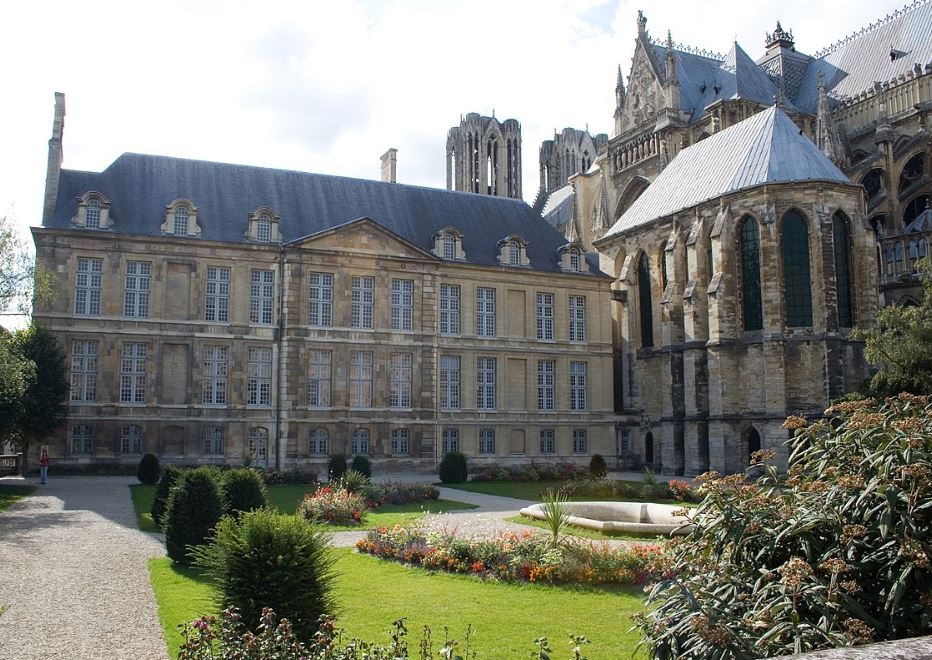
3. Place Royale
Place Royale is the name of many famous squares around the world, but the one in Reims is special for several reasons. Not only is it located just north of Reims Cathedral in the heart of the city, but it’s also decorated with a remarkable sculpture in its center.
This “Monument to King Louis XV of France” was inaugurated in 1765 and sculpted by the most renowned French sculptor in the 18th century, Jean-Baptiste Pigalle. It depicts the French king wearing ancient Roman clothes while he raises his hand to protect the people. His successor, King Louis XVI, ended up being guillotined during the French Revolution.

4. Porte de Mars
The Porte de Mars is a remarkable ancient Roman triumphal arch that dates back to the 3rd century A.D. It’s located in the northeastern corner of the Les Hautes Promenades park near the Reims train station and forms the centerpiece of a picturesque square.
It’s not only one of the most remarkable arches in France, but it’s also the widest Roman arch in the world. Although it only reaches a height of about 13 meters (42.65 feet), it has a total length of 32 meters (104.98 feet). This is much longer than any other similar monument that the Romans left behind.

5. Basilica of Saint-Remi
The Basilica of Saint-Remi is another prominent medieval landmark in Reims that was founded in the 11th century. The construction of this abbey basilica wasn’t completed until the 15th century which means it incorporates both Romanesque and Gothic elements.
This building was constructed on top of the Chapel of Saint Christophe, the presumed burial place of Saint Remi. As I mentioned, he was the bishop of Reims who baptized Clovis I in the year 496. Together with Reims Cathedral, the Palace of Tau, and the adjoining former abbey of Saint-Remi, it was inscribed as a UNESCO World Heritage site in 1991.
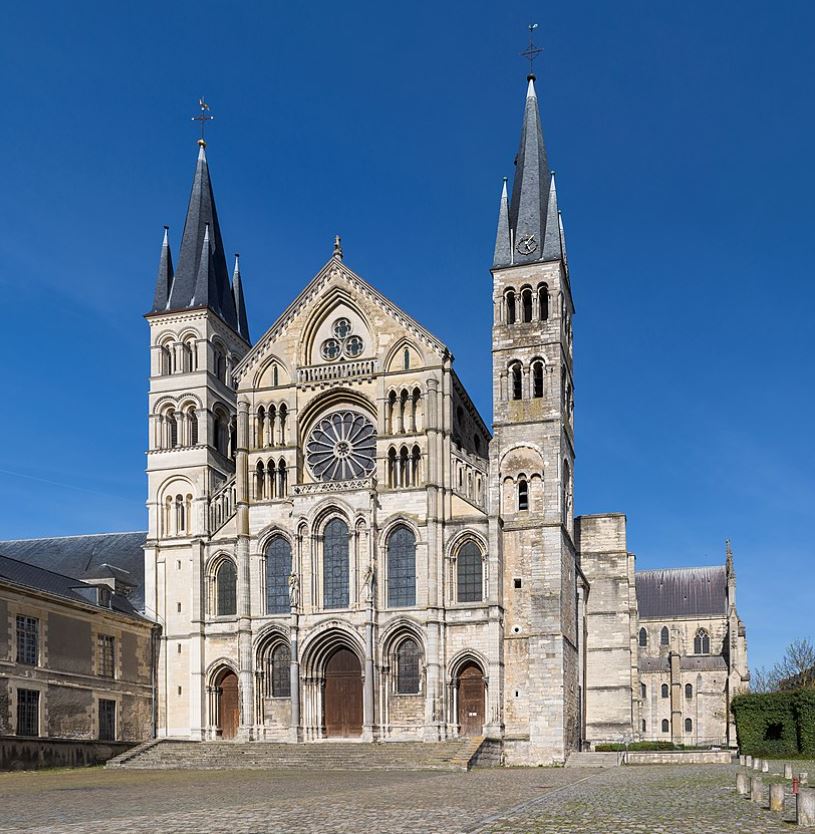
6. Reims Manège and Circus
The Reims Manège and Circus is the name of a 19th-century entertainment complex in Reims that was constructed between 1865 and 1867. As the name suggests, it consists of a circus with adjoining buildings that were used to house the animals that performed in the shows.
The building was modeled on the Cirque d’Hiver, a similar building in Paris that opened its doors as the “Cirque Napoléon” in 1852. The buildings are “Monuments Historiques” of France and are still used for performances today.
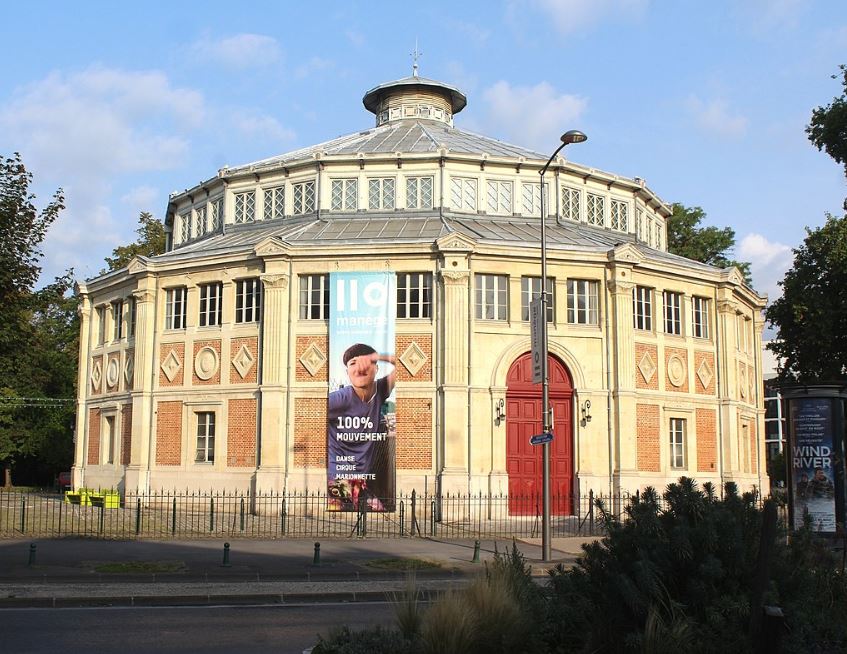
7. Carnegie Library of Reims
The Carnegie Library of Reims is one of the many library buildings that were constructed with money donated by rich industrialist and philanthropist Andrew Carnegie (1835-1919). It was constructed during the 1920s and was one of three so-called “front-line cities” during World War I to which Carnegie donated a library.
The other two were Leuven in Belgium and Belgrade in Serbia. The structure in Reims remained the main library building in Reims until 2003 and incorporates a distinctive Art Deco design. A sculpture of the man who funded the project with $200,000 (about 3 million francs at the time) is located in front of the entrance.
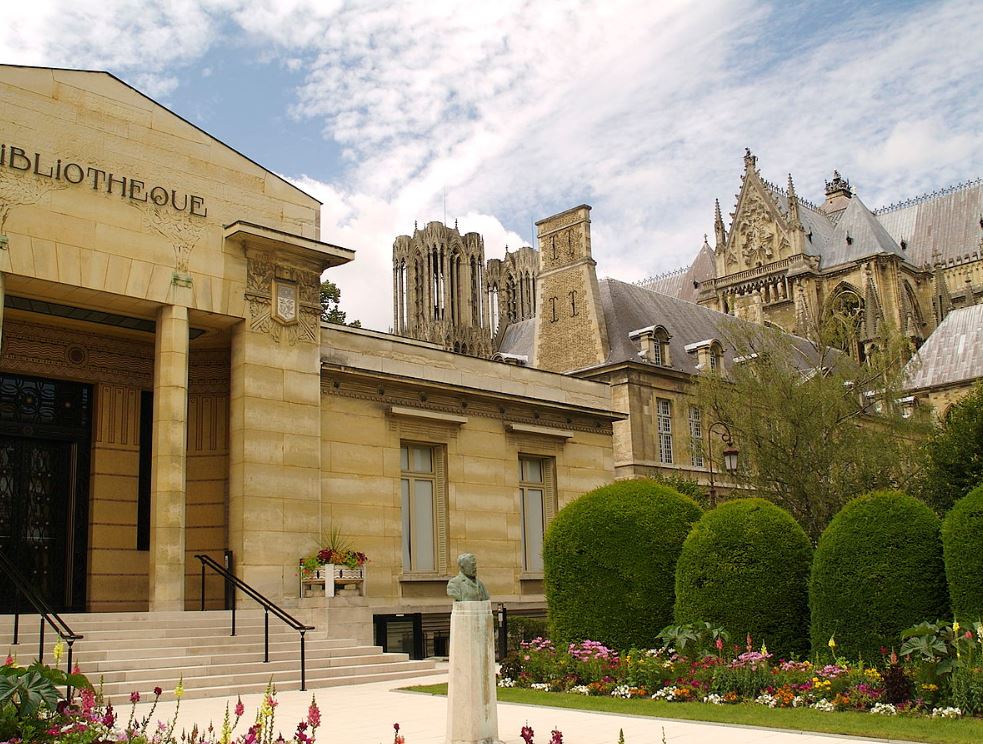
8. Foujita Chapel
The Foujita Chapel is the common name of a chapel in Reims that is officially known as the “Chapel of Our Lady Queen of Peace.” The building was named in honor of Tsuguharu Foujita (1886-1968), a Japanese artist who designed and decorated the chapel.
The structure was completed between 1965 and 1966 and is famous for the beautiful frescoes that Foujita painted on the interior walls. The Japanese painter came to Paris in 1913 and was a prominent member of the School of Paris, a group of foreign artists who lived and worked in Paris in the first half of the 20th century.

9. Reims Opera House
The Reims Opera House is the main opera house in the city and was originally referred to as the “Grand Théâtre” or “Grand Theater.” It was completed in 1873 and although it was inspired by the Palais Garnier in Paris, it’s substantially less lavish.
This is not something to be shy about because the opera house in Paris is the epitome of extravagance. The original building was destroyed during World War I but rebuilt to its original design between 1931 and 1932. The most notable feature of the building is the huge chandelier in the auditorium which had a diameter of 7.5 meters (25 feet).
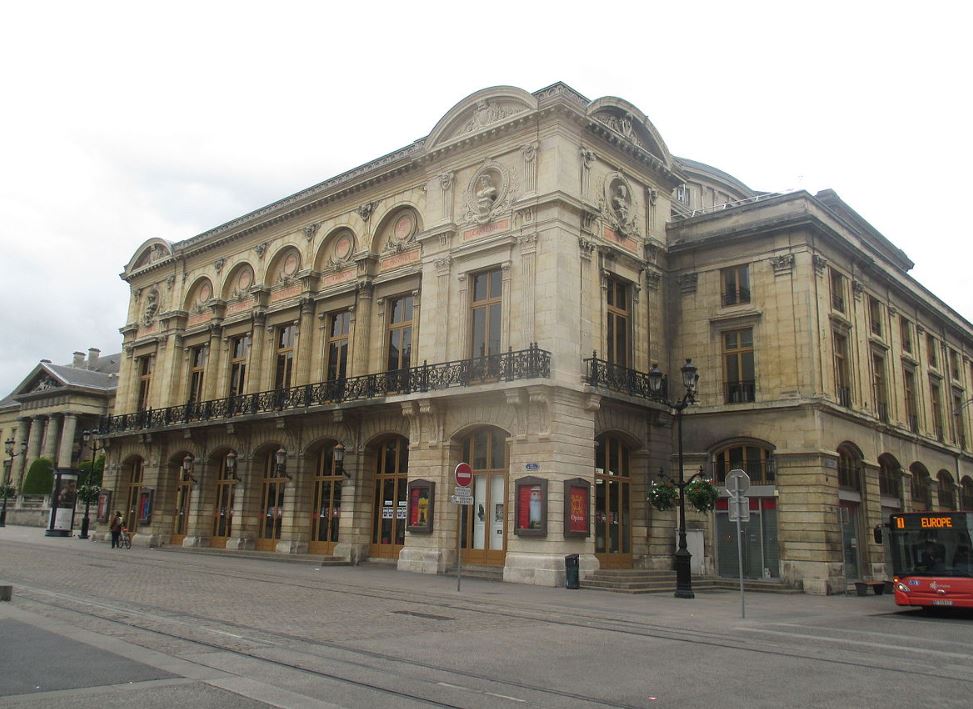
10. Hôtel de Ville, Reims
The Hôtel de Ville is the beautiful city hall of the city of Reims. It was constructed in the 17th century and was used a year after construction had started in 1627 as the main meeting place of the city council. Many additions were made until well into the 19th century.
The construction was finally completed in 1880 but this original building burned down during World War I in 1917. It was completely rebuilt to how it looked before between 1924 and 1928. It remains in use for municipal services and is one of the most striking landmarks in Reims.



